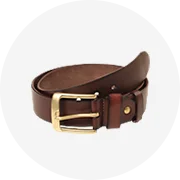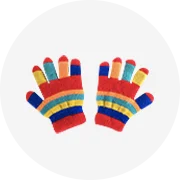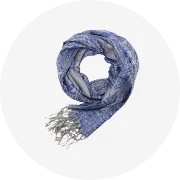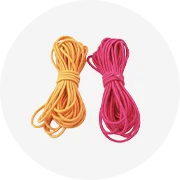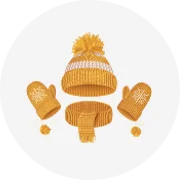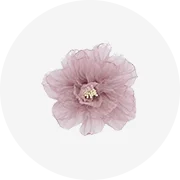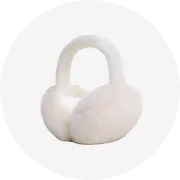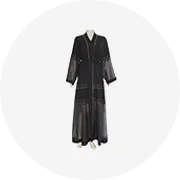आपके उद्योग में लोकप्रिय






एमआई थोक विज्ञान शैक्षिक किट स्टेम खिलौने शैक्षिक पहेली लकड़ी विज्ञान प्रयोग किट स्टेम शैक्षिक खिलौने बच्चों के लिए
₹63.75 - ₹102.00
न्यूनतम ऑर्डर: 50 बैग
शिपिंग प्रति टुकड़ा: ₹304.28







200+ प्रकार के स्कूल के छात्र सीखने की सामग्री सेल्फ असेंबली प्रयोग बच्चों के लिए शैक्षिक DIY खिलौना STEM विज्ञान किट
शिप करने के लिए तैयार
₹59.50 - ₹278.78
न्यूनतम ऑर्डर: 30 सेट
शिपिंग प्रति टुकड़ा: ₹174.24







PUSELIFE Waldorf उभरा नमूनों लकड़ी Playdough उपकरण खिलौने प्लास्टिसिन मिट्टी मोंटेसरी खिलौने लकड़ी Playdough स्टाम्प संवेदी
₹50.15 - ₹68.00
न्यूनतम ऑर्डर: 300 नग
शिपिंग प्रति टुकड़ा: ₹80.75







कारखाने थोक बच्चों को बढ़ते क्रिस्टल किट साबुन स्नान बम बनाने खिलौना कला विज्ञान प्रयोग खिलौना विज्ञान किट
₹45.05 - ₹347.63
न्यूनतम ऑर्डर: 200 सेट
शिपिंग प्रति टुकड़ा: ₹5,108.07




किसी भी आकार किसी भी रंग अनुकूलित किया जा सकता लकड़ी के ब्लॉक हुई Tumbling टॉवर स्टैकिंग खिलौने रंगीन डिजाइन आउटडोर खेल बच्चों को वयस्कों
₹127.49 - ₹1,606.37
न्यूनतम ऑर्डर: 500 सेट







थोक सस्ते पानी के पूल खिलौना बाल्टी शॉवेल बच्चों सैंडबॉक्स खिलौना समुद्र तट उपकरण किट बच्चों के लिए रेत समुद्र तट खिलौने
₹84.15 - ₹220.14
न्यूनतम ऑर्डर: 48 सेट
शिपिंग प्रति टुकड़ा: ₹407.97






DIY जादू रेत शैक्षिक खिलौना सबसे अच्छा बेच थोक कस्टम मोल्डिंग गतिशील समुद्र तट खेलने रेत कला किट बच्चों के लिए
₹42.50 - ₹416.47
न्यूनतम ऑर्डर: 1000 सेट






अद्भुत प्रस्तुत गर्मियों में समुद्र तट खिलौना प्लास्टिक खेलने रेत उपकरण किट DIY डायनासोर अंतरिक्ष रेत कभी गीले जादू रेत को आकार देने ढालना खिलौने
₹127.49 - ₹157.24
न्यूनतम ऑर्डर: 108 इकाइयां
शिपिंग प्रति टुकड़ा: ₹443.67






गैर विषैले रेत महल किट शैक्षिक जादू मॉडलिंग रेत खेलने रेत किट खिलौना
₹41.65 - ₹68.00
न्यूनतम ऑर्डर: 100 बैग






नई बच्चों समुद्र तट खिलौने बच्चों खेलने पानी खिलौने रेत बॉक्स सेट किट के लिए रेत बाल्टी गर्मियों में खिलौने समुद्र तट
₹246.48 - ₹280.48
न्यूनतम ऑर्डर: 2 नग






रेत किट बच्चों के लिए, 46 टुकड़े सैंडबॉक्स रेत खेलने के साथ खिलौने महल के नए नए साँचे के लिए खेलने रेत खिलौने बच्चे
₹339.98 - ₹849.93
न्यूनतम ऑर्डर: 180 नग



बच्चों के लिए काइनेटिक स्पेस सैंड्स कैसल किट सेंसरी खिलौने प्ले सैंड्स
₹96.05 - ₹104.55
न्यूनतम ऑर्डर: 180 बॉक्स
शिपिंग प्रति टुकड़ा: ₹107.10
शीर्ष श्रेणियां
रेत किट खिलौने के बारे में
Alibaba.com 701 रेत किट खिलौने उत्पादों की पेशकश करता है. रेत किट खिलौने विकल्पों की व्यापक विविधता आपके लिए उपलब्ध है, जैसे 7 के लिए 5 साल, 8 करने के लिए 13 साल, और 4 करने के लिए 2 साल. आप यूनिसेक्स, लड़कों, और महिला रेत किट खिलौने से भी चुन सकते हैं. साथ ही प्लास्टिक, पीवीसी, और लकड़ी रेत किट खिलौने से भी चुन सकते हैं. और फिर चाहे रेत किट खिलौने हो रंगीन, ब्लू, या लाल हो.







